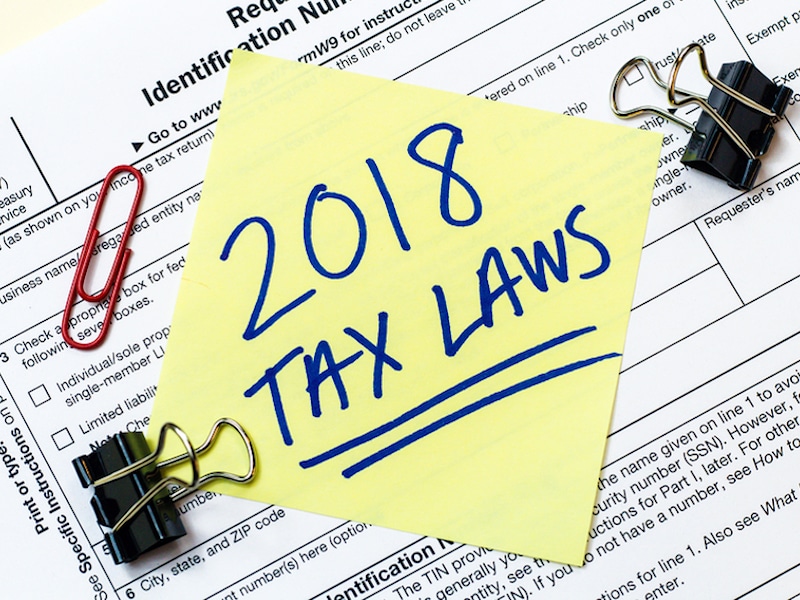Important News for Employers: IRS Eliminates 1099-MISC Automatic Extension

Are you relishing the last few weeks of summer? You probably don’t want us to remind you about the tax paperwork that comes at the end of another year of business ownership. Though it’s unpleasant to think about it, tax season is just a few months away. If you have employees—especially freelancers—you need to be aware of a change in filing deadlines.
If you have been using the automatic 30-day IRS reporting extension for W-2 and 1099-MISC (non-employee compensation with an amount in box 7), be aware that the IRS has eliminated it.
Let’s break it down.
What: IRS final regulation T.D. 9838 eliminates the automatic 30-day filing extension for 1099-MISC and W-2. Employers must file by January 31 to avoid a penalty.
Effective Date: August 3, 2018
Why the change: To reduce identity theft tax refund fraud.
The penalty for missing the deadline: Between $100 and $260 per form.
What if I can’t file by January 31?
You can apply for an extension, but there is no guarantee that the IRS will approve it.
Background on IRS Reporting Deadline Change
Identify theft tax fraud costs U.S. taxpayers billions of dollars yearly. In 2016, identity thieves filed for $14.5 billion in 2015 tax year refunds. The scammers were successful at stealing $2.2 billion. The good news is that the IRS identified and protected $12.3 billion (85%).
As part of these fraud detection efforts, the IRS wants to accelerate the filing of these forms.
“Identity theft and refund fraud are persistent and evolving threats to the nation’s tax system. They place an enormous burden on the tax system and taxpayers. Identity thieves and unscrupulous preparers often claim refunds by electronically filing fraudulent tax returns early in the tax filing season. The IRS uses third-party information returns to increase voluntary compliance, verify accuracy of tax returns, improve collection of taxes, and combat fraud, including refund fraud committed by those using the stolen identities of legitimate taxpayers. Accelerating the receipt of third-party information returns is one way to better enable the IRS to identify and stop fraudulent refund claims before they are paid.” https://www.federalregister.gov/documents/2018/08/03/2018-16717/extension-of-time-to-file-certain-information-returns
The elimination of the extension gives the IRS another 30 days to identify the fraudulent refund claims among the millions of legitimate claims.
I’m a new employer. How do I know if I need to file a 1099-MISC form?
The IRS uses the form 1099-MISC to identify miscellaneous income a business pays to entities other than employees. For actual employees, a business owner sends a W-2 form showing wages and taxes withheld.
A small business owner who uses freelancers and independent contractors must file a 1099-MISC for each professional. Just like a W-2, the employer must send a copy to both the IRS and the contractor.
If you paid a contractor less than $600 during the year, you don’t need to file a 1099-MISC.
If a business owner hires an unincorporated corporation to provide services, they must track these payments with a 1099 form as well.
What’s the difference between an employee and an independent contractor?
New business owners can’t mess this one up. The implications for misclassification are far more serious than filing the wrong tax form. Employers are subject to different labor laws for employees vs contractors. Most importantly, employers must withhold income, Social Security, and Medicare taxes for employees. They must also comply with minimum wage and overtime regulations in the Fair Labor Standards Act.
There are several conditions a service provider must meet to qualify as an independent contractor. The core question is the nature of the business relationship between you and the worker. If you control the relationship, the person is an employee. If the worker has complete autonomy, they may be a contractor. The IRS spells it out on their website. You can also seek guidance from an accountant or HR specialist.
Since employers have fewer tax and compliance obligations with freelancers, it’s easy to see why many are tempted to misclassify. Some high-profile employers have incurred expensive penalties for misclassifying employees as contractors. Since 2005, in several different class action suits involving thousands of employees, FedEx has paid out 453 million in back wages and penalties. FedEx had drafted its own independent contractor classification policy which ignored the fact that FedEx has nearly total control of the business relationship with its drivers.
Swipeclock Recommendations for Employers
1. Start compiling your 1099 contractor information now. Workforce management accounting software simplifies small business IRS compliance.
2. If you aren’t using employee time tracking software, automate. Maintaining IRS compliance depends on accurately tracking employee time and attendance. Whether you have employees, freelancers, or a combination of both, you need to track hours accurately. WorkforceHub time and attendance software also compile and maintains the payroll information for tax preparation and audit protection.
3. Use workforce management software with employee payroll self-service. This allows your employees to make withholding updates on their own through your company’s online HR portal or mobile app. They can also manage their own time cards, work schedules, benefits enrollment, and review payroll data. Employees love the 24/7 access. Administrators don’t have to handle transactions that the employees are capable and willing to handle on their own.
Note For Employees
Even in years without a major tax law, it’s smart to do a paycheck check-up. The IRS strongly suggests doing a paycheck audit ASAP because the Tax Cuts and Jobs Act lowered withholding rates effective January 2018. Consequently, some employees may end up owing taxes for 2018 instead of receiving a refund. If you ask your employer to withhold more, you still have four months to catch up.
Keep in mind that the TCJA restructured tax rates and brackets. It also eliminated personal exemptions, changed the standard deduction, raised the child tax credit, and eliminated or decreased some deductions. These changes may affect how much you want to be withheld from your paycheck.
By Liz Strikwerda
Simplify HR management today.
Simplify HR management today.
9 Best Receipt Apps for Small Businesses and Freelancers in 2024
As a business owner or freelancer, you’re spinning many plates at once. You’re keeping up with payroll, making pitches, nurturing your email marketing funnel, and much more. All to maintain and grow your business. The last thing you need is to panic each month as you look for receipts at expense report time. Administrative work…
Read MoreYour Guide to GPS Time Tracking (Geofencing)
Updated March 19, 2024 When your business has employees working remotely or at various job sites, time tracking can become a challenge, particularly if the company relies on physical clocks for punching in and out. But offering a mobile app or web-based tracking solution can cause some concerns. You might wonder whether employees are clocking…
Read More





